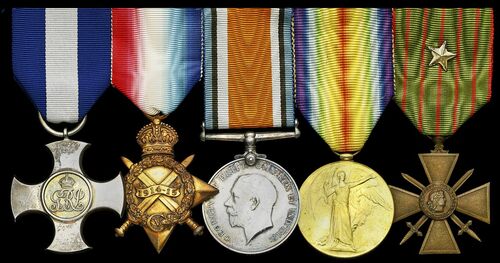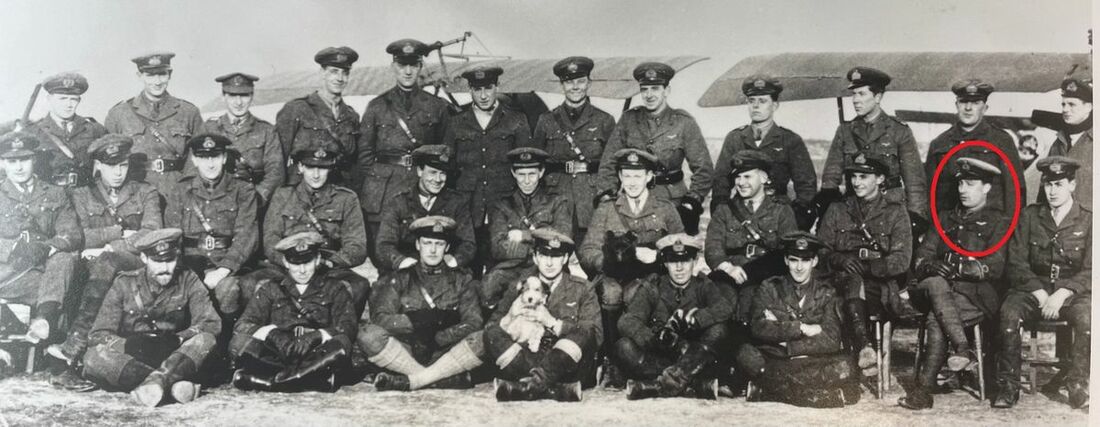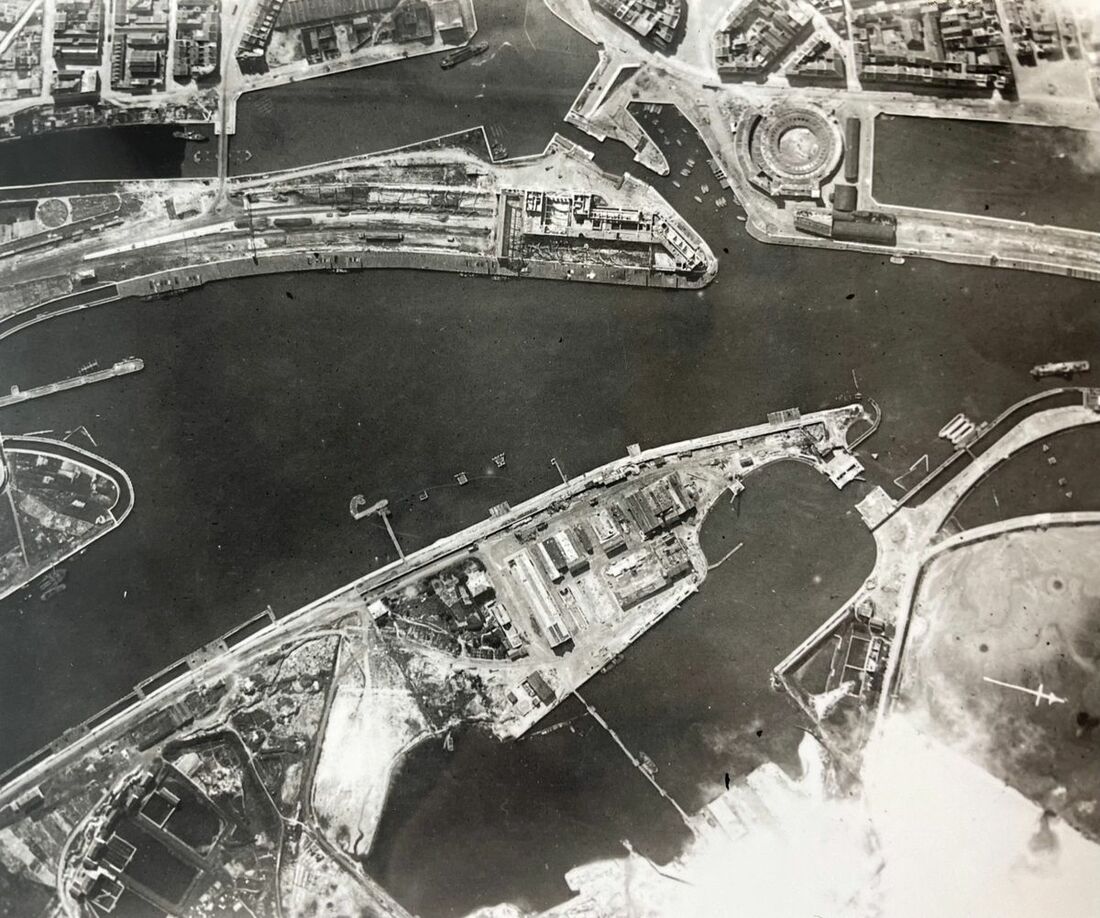Auction: 23002 - Orders, Decorations and Medals
Lot: 83
A Great War D.S.C. group of five awarded to Captain H. A. Furniss, Royal Naval Air Service, late British Red Cross Society and R.N.V.R. Armoured Cars, who was decorated for his important photographic reconnaissance over Ostende in February 1918 in preparation for the famed Zeebrugge Raid
Distinguished Service Cross, G.V.R., hallmarks for London 1918; 1914-15 Star (H. A. Furniss. B.R.C. & St.J.J.); British War and Victory Medals (Capt. H.A. Furniss. R.A.F.); France, Croix de Guerre, reverse dated '1914-1917', with gilt star upon riband, mounted as worn, nearly extremely fine (5)
D.S.C. London Gazette 17 April 1918:
'For the skill and courage displayed by them in carrying out many long and valuable photographic reconniassances over enemy territory particularly over Ostende on the 21st February, 1918.' (joint citation with Flt. Cdr. C. F. Brewerton, R.N.A.S.)
Croix de Guerre London Gazette 20 July 1917. Awarded for services with the R.N.A.S. in France, an award presented in the field by General Nollet on 20 May 1917.
Hector Albert Furniss was born on 29 July 1884. Prior to his Great War service he served as a Private Secretary and served in France with the British Red Cross from the 7 December 1914. He joined the Royal Naval Air Service on 2 August 1915 serving as a Temporary Sub-Lieutenant (Armoured Cars), then becoming an Observer on 19 October 1915 at Clement Talbot Works in Kensington, London, before being transferred to Dover on 2 December 1915.
He was transferred to No.1 Wing based at Dunkirk on the 8 May 1916 and his report for service there reads as follows:
'An excellent Observer, used for special reconniassances. Experienced in Air fighting. Acts as Asst Intelligence Officer, and shows conspicuous ability.'
On 24 April 1916, he was observer to Flight Sub-Lieutenant H. R. Sims, in a Nieuport 10 biplane, when they attacked an enemy seaplane at 9000 feet. Five miles out to sea north-east of Zeebrugge and after three trays of ammunition had been expended, the German Pilot fell forward and the machine nose-dived towards the sea. The Observer jumped out at 3000 feet and fell in a horizontal attitude to his end, while the machine on hitting the water, exploded with its own bombs, leaving a large black patch on the surface (The War in the Air, refers).
His R.N.V.R. appointment was terminated on 1 April 1917, when he was appointed Observer Lieutenant, R.N.A.S., still serving with No. 2 Squadron, No. 1 Wing, at Dunkirk. He was mainly engaged in Photographic Reconnaissance and made many such flights, especially in the months leading up to the Zeebrugge-Ostende operations, for which he received his well-earned award. In April 1918, his CO reported:
'Has carried out his duties as Observer with great skill and determination and has fully earned the privilege of going home to qualify as a pilot. An officer of considerable ability and very hardworking. Would make an excellent Squadron Commander.'
Furniss was duly appointed to Cranwell for flying training but his subsequent services are not known. Sold with a large quantity of research.
Subject to 20% VAT on Buyer’s Premium. For more information please view Terms and Conditions for Buyers.
Sold for
£2,600
Starting price
£1100









